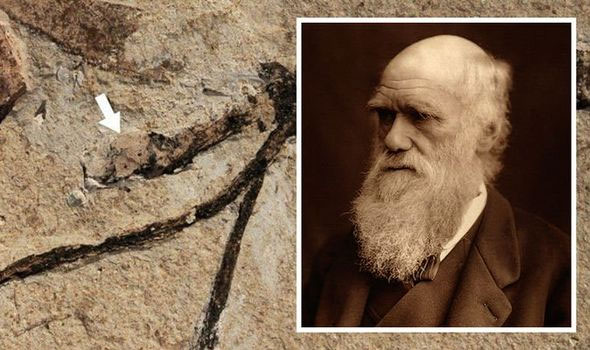The mystery that once made Charles Darwin a headache is solved after 140 years
The mystery that once baffled famous scientist Charles Darwin has been solved 140 years after his death.
Chinese experts announced they have found the oldest flower bud fossil. This may be the final piece of the puzzle that proves flowering plants evolved tens of millions of years earlier than previously thought. The team hopes their discovery will help solve the mystery that once baffled scientist Darwin.

Charles Darwin never solved this mystery.
Darwin always wondered how plants evolved so quickly when the oldest flower fossils are no more than 130 million years old. He has never found the answer, but now this mystery can now be solved.
In 2016, scientists in China announced the discovery of a "perfect flower" fossil dating from the Jurassic period, more than 145 million years ago. The fossil plant, called Euanthus, had not only petals but sepals, as well as male and female reproductive organs, including an ovary similar to modern flowers.
Two years later, another flower fossil was found in China, and this flower is called Nanjinganthus, about 174 million years old. It shares similarities with modern flowers, its seeds completely enclosed in an ovary. However, some at the time argued that they were not angiosperms, which the scientists discovered were too rudimentary to be considered flowers.
The new fossil flower bud, found in China and named Florigerminis jurassica, may be what the researchers were looking for. The fossil is estimated to date from more than 164 million years ago and is in perfect condition. The stem is connected not only with the flower buds, but also with the fruit and twigs, which is extremely rare.
Florigerminis jurassica is considered a "unique" find and initial examination has shown it to be an early angiosperm.
The authors, who published their study in the Special Journal of the Geological Society of London, stress that the results prompt us to "rethink the evolution of angiosperms".
- Decipher the mystery of the most strange creature ever discovered
- Revealing the mysterious and mysterious disease of scientist Charles Darwin
- Charles Darwin's ancestors were originally from Africa
- Find the egg of Charles Darwin
- November 24, 1859 - Charles Darwin publishes the book
- Revealing the strange disease Charles Darwin had
- Unbelievable stories about father theory of evolution
- Charles Darwin's strange eating hobby
- The marine watch associated with the expeditions of Charles Darwin
- How does ostentatious traits of males evolve?
- The genius of mankind and the story of
- The mystery of the island is regarded as hell for Charles Darwin
 Discovered an ancient centipede fossil 99 million years old
Discovered an ancient centipede fossil 99 million years old Discovered bat-like dinosaurs in China
Discovered bat-like dinosaurs in China Discovered a 200-year-old bronze cannon of the coast
Discovered a 200-year-old bronze cannon of the coast Discover 305 million-year-old spider fossils
Discover 305 million-year-old spider fossils